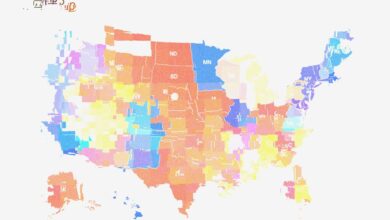

Illustration: Intelligencer; Photos: Getty Images
One notable difference between Republicans and Democrats is that the former tend to seize on any available evidence that their candidate is winning and hype it to high heaven, while the latter are prone to freaking out at any adverse public-opinion data. This has been a week for extreme reactions to individual polls, most notably a Quinnipiac survey of midwestern battleground states that showed Donald Trump leading Kamala Harris by three points (50 to 47 percent) in Michigan and two points (48 to 46 percent) in Wisconsin — or as the poll release put it, “Blue Wall Shows Cracks.”
Looking at the bigger picture, though, the general trend is toward an ever-closer race on a broader landscape of states that could go either way. According to the FiveThirtyEight polling averages, no one leads by more than a single point in six of the seven battleground states. Harris’s lead is exactly one point in Nevada (47.9 to 46.9 percent) and Michigan (also 47.9 to 46.9 percent); 0.8 percent in Pennsylvania (48.0 to 47.2 percent); and 0.7 percent in Wisconsin (48.0 to 47.3 percent). Trump leads by 0.8 percent (48.0 to 47.3 percent) in North Carolina and by 0.7 percent (48.1 to 47.4 percent) in Georgia. Trump’s 1.3 percent (48.1 to 46.9 percent) lead in Arizona isn’t all that secure either.
So while an extrapolation of current leads would give Harris 276 electoral votes to Trump’s 262, a uniform one-point shift in the battleground states could give Harris 308 electoral votes or Trump 312 electoral votes. It’s that close, and the distinction we’ve all been making between the Harris-leaning Rust Belt states and the Trump-leaning Sun Belt states is increasingly an oversimplification of a dead-even race in states ranging from Nevada to Pennsylvania.
The national polling picture remains stable. In the FiveThirtyEight averages Harris leads Trump by 2.6 percent (48.5 to 45.9 percent); her lead has been between 2.4 percent and 2.9 percent for more than a month now. According to an October 7 YouGov/Economist survey, 97 percent of Harris-supporting registered voters and 98 percent of Trump-supporting registered voters say they have “definitely” made up their minds; only 5 percent report themselves as undecided. Now that Trump has ruled out further debates, there is no predictable campaign event to watch for as a potential game changer. So barring big external developments in the country or the world or in our understanding of the candidates (i.e., a true “October surprise”), the outcome of this race will depend on the voter persuasion and mobilization efforts of the two campaigns.
The uncertain outcome of the presidential contest is echoed in the battle for control of Congress. Democrats have a small lead (47.3 to 46.0 percent) in the generic congressional-ballot polling that simulates the national House popular vote. But a shift in just a few of 40-some highly competitive races could tip the House in one direction or the other.
As for the Senate, Republicans are in a very strong position for a takeover thanks to a sure win in West Virginia and an increasingly solid lead in Montana. Democratic prospects for maintaining control of the chamber depend on long-shot upsets in Florida, Texas, or Nebraska (where Republican Deb Fischer is in a shockingly close race with independent Dan Osborn). But on the other hand, Republican Senate candidates are steadily gaining ground in the polls in Michigan, Ohio, Pennsylvania, and Wisconsin. There would be a pretty big difference between a 51-49 (in which moderate Republicans like Susan Collins and Lisa Murkowski would have enormous leverage) and a 55-45 Senate, particularly if Trump wins the White House and Republicans hold onto the House.
All in all, the polls show that the range of possible outcomes for this election is enormous despite the plethora of extremely close contests in the states. And that’s not even taking into account the high odds that Trump would again try to overturn another close defeat. Hold on to your seats, and your wits.
Source link




